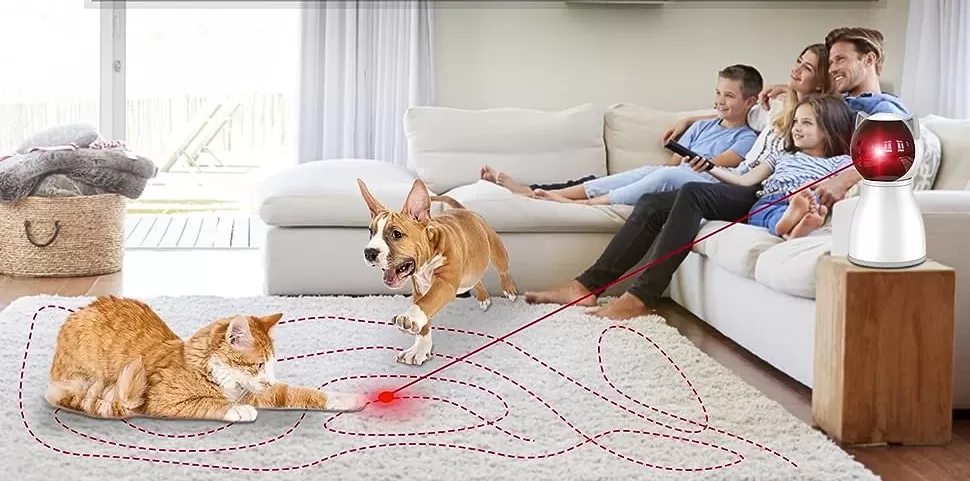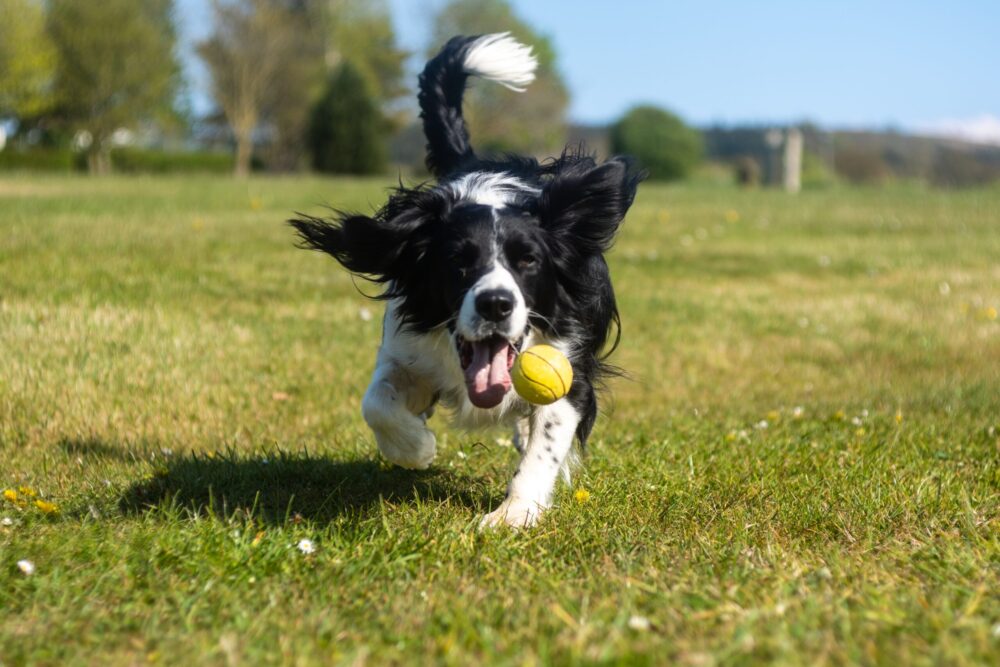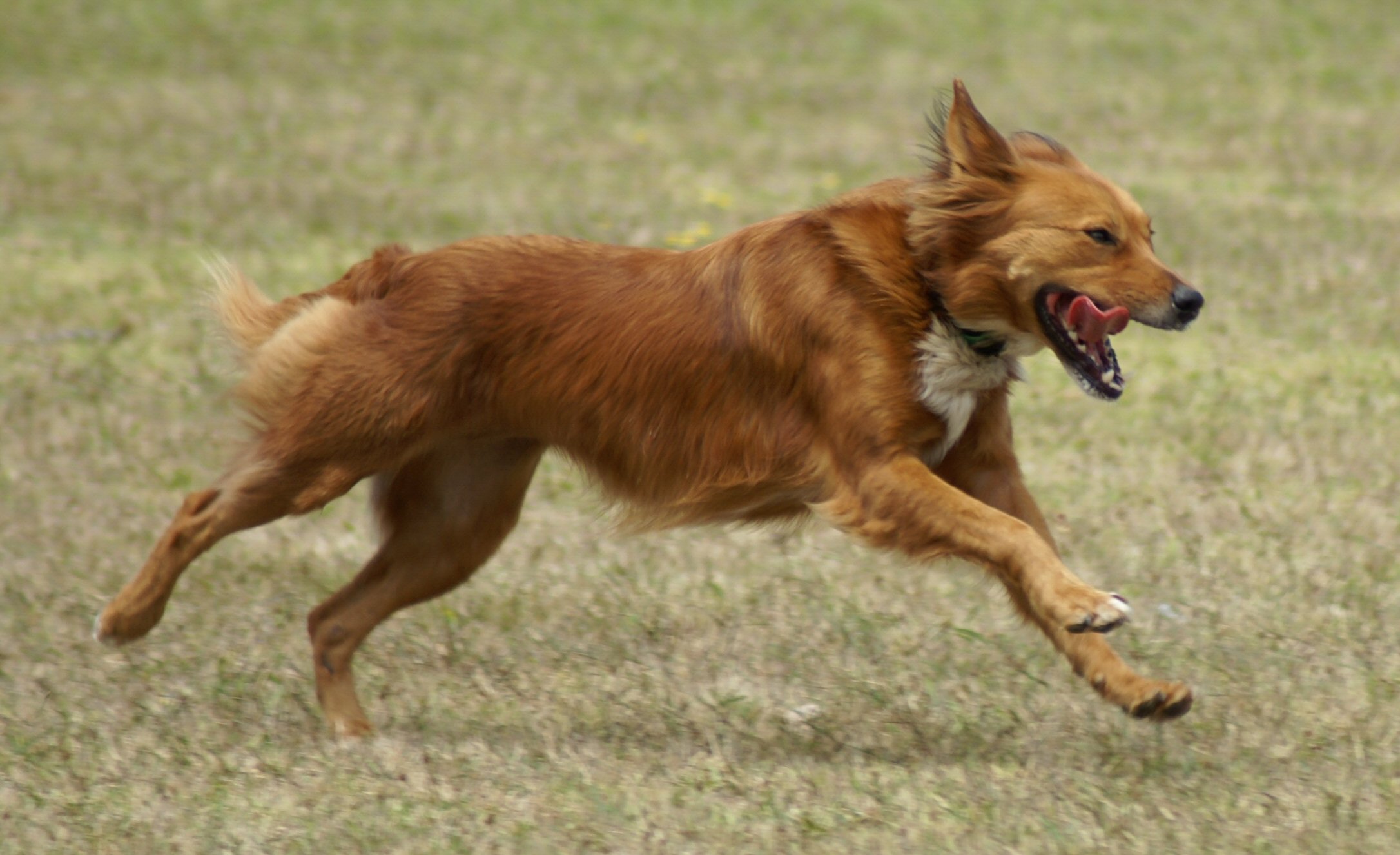Last Updated on July 9, 2024
My Pug, Winston, is a champion eater. Picture this: a tiny, snorting whirlwind descending upon his food bowl, kibble flying, a symphony of satisfied grunts. While his enthusiasm is endearing, it also sparked a worry in my heart – bloat. This serious condition, often linked to rapid eating, can be life-threatening for dogs, especially those with Winston’s flat-faced charm.
Bloat occurs when a dog’s stomach fills with gas and potentially twists, cutting off blood supply. It’s a terrifying thought, and the urgency in my veterinarian’s voice when she explained the risks solidified my determination to find a solution. That’s when I discovered the world of slow feeders, a simple yet effective way to pace Winston’s eating and protect his precious pug belly.
Join me as we explore the fascinating world of slow feeders, uncovering their benefits, navigating the different types, and even testing out a few top contenders that have earned Winston’s enthusiastic tail wags.
Why Slow Feeders Matter: Beyond the Bowl
Slow feeders, as their name suggests, are designed to slow down a dog’s eating pace. They achieve this through various obstacles and designs that make it more challenging for dogs to gobble down their food in a single gulp. This seemingly simple concept offers a surprising array of benefits, especially for Pugs like Winston.
Firstly, slow feeders promote better digestion. Pugs, with their compact bodies and smushed faces, are prone to digestive issues. Slowing down their eating allows their digestive system to process food more efficiently, reducing the risk of bloating, gas, and discomfort. I vividly remember the evening Winston devoured his dinner in record time, only to spend the rest of the night pacing, whimpering, and emitting a symphony of gurgling noises. It was a clear sign that his little tummy needed a helping hand.
Secondly, slow feeders can help manage weight. Pugs, with their love of treats and tendency towards a sedentary lifestyle, are prone to packing on the pounds. Slowing down their eating helps them feel fuller faster, reducing the risk of overeating and promoting a healthy weight. Winston, with his penchant for begging for scraps and his adorable roly-poly physique, is a prime candidate for weight management.
Finally, slow feeders can turn mealtime into a fun and engaging activity. Instead of inhaling their food in seconds, dogs have to work a little harder to access their kibble, providing mental stimulation and preventing boredom. Watching Winston navigate the maze of a slow feeder, his tongue darting out, his little tail wagging with determination – it’s a delightful sight that brings a smile to my face.
Slow Feeder Styles: A Buffet of Options for Your Pug
Just like humans have their preferred dining styles, dogs have their own preferences when it comes to slow feeders. Luckily, there’s a wide variety of options available, catering to different eating habits and personalities.
- Maze Feeders: These feeders feature intricate maze-like patterns that challenge dogs to maneuver their food through twists and turns, slowing down their eating and providing mental stimulation.
- Puzzle Feeders: These feeders take the challenge up a notch, requiring dogs to solve puzzles or manipulate levers to access their food. They’re a great option for dogs who enjoy a mental workout and need an extra challenge to slow down their eating.
- Rounded Feeders: These feeders feature rounded edges or raised bumps that make it difficult for dogs to scoop up large mouthfuls of food, encouraging them to take smaller bites and chew more thoroughly.
- Elevated Feeders: These feeders are raised off the ground, promoting better posture and aiding in digestion by reducing the risk of air swallowing and bloating.
Slow Feeder Showdown: Putting the Best Bowls to the Test
Choosing the right slow feeder for your Pug involves considering their muzzle length, eating habits, and personality. Here are a few top contenders that have earned Winston’s paw of approval:
Outward Hound Fun Feeder Slo Tray
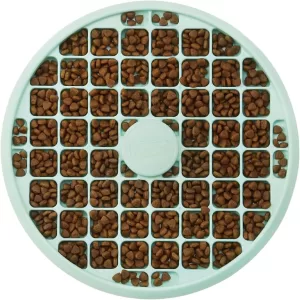 This shallow tray feeder, designed specifically for flat-faced breeds, is a game-changer for Winston. The meal-lengthening ridges and deep grooves effectively slow down his eating, while the non-slip base prevents spills and messes. I appreciate the durable construction and the fact that it’s dishwasher safe – a must-have for busy Pug parents like myself.
This shallow tray feeder, designed specifically for flat-faced breeds, is a game-changer for Winston. The meal-lengthening ridges and deep grooves effectively slow down his eating, while the non-slip base prevents spills and messes. I appreciate the durable construction and the fact that it’s dishwasher safe – a must-have for busy Pug parents like myself.
Pro: The shallow tray design caters specifically to flat-faced breeds, making it easier for them to access their food comfortably.
Con: The bowl’s capacity of 1.5 cups might be insufficient for larger dogs or those with higher food requirements.
Skid Stop Slow Feed Bowl
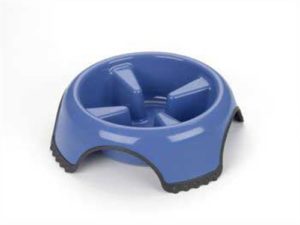 This affordable and practical feeder is a great option for budget-conscious Pug owners. The raised obstacles effectively slow down Winston’s eating, while the heavy-duty plastic construction ensures durability. The rubbery base prevents the bowl from sliding around, and the dishwasher-safe design makes cleanup a breeze. While it might not be as visually appealing as some other slow feeders, it gets the job done effectively.
This affordable and practical feeder is a great option for budget-conscious Pug owners. The raised obstacles effectively slow down Winston’s eating, while the heavy-duty plastic construction ensures durability. The rubbery base prevents the bowl from sliding around, and the dishwasher-safe design makes cleanup a breeze. While it might not be as visually appealing as some other slow feeders, it gets the job done effectively.
Pros: Affordable. Safe materials. Perfect for dogs with a small or no snout.
Cons: Not exactly that challenging.
Outward Hound Kyjen 51003 Fun Feeder Slow Feed Interactive Bloat Stop Dog Bowl
 This feeder combines functionality with fun, featuring a maze-like design that challenges Winston to work for his food. The obstacles are strategically placed to slow down his eating without frustrating him, and the food-safe plastic construction ensures safety. Winston seems to enjoy the interactive element of this feeder, and I appreciate the mental stimulation it provides.
This feeder combines functionality with fun, featuring a maze-like design that challenges Winston to work for his food. The obstacles are strategically placed to slow down his eating without frustrating him, and the food-safe plastic construction ensures safety. Winston seems to enjoy the interactive element of this feeder, and I appreciate the mental stimulation it provides.
Pros: Safe for your Pug. Good for dogs with a small or no snout.
Cons: This is a little more challenging than the previous model.
Slow and Steady Wins the Race: Tips for Transitioning Your Pug
Introducing a slow feeder to your Pug might require a bit of patience and encouragement. Here are a few tips to make the transition smooth and enjoyable:
- Start Gradually: Begin by mixing a small amount of food in the slow feeder with your Pug’s regular food bowl. Gradually increase the proportion of food in the slow feeder as your Pug becomes more comfortable.
- Make it Positive: Pair the slow feeder with positive reinforcement, like treats or praise, to create a positive association. Avoid forcing your Pug to use the slow feeder, as this can create negative associations and make them resistant to using it.
- Choose the Right Size and Design: Ensure the slow feeder is appropriately sized for your Pug’s muzzle length and eating habits. If the feeder is too challenging or frustrating, your Pug might give up and refuse to eat.
- Be Patient: It might take some time for your Pug to adjust to a slow feeder. Be patient and persistent, and eventually, they’ll learn to enjoy the new feeding experience.
Conclusion
Remember, a slow feeder is an investment in your Pug’s health and well-being. By slowing down their eating, you’re helping them digest their food more efficiently, manage their weight, and enjoy a more relaxed and engaging mealtime. With a little patience and the right slow feeder, you can transform your Pug’s eating habits and keep their adorable belly happy and healthy.
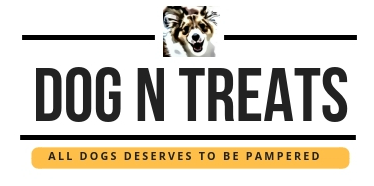 Dog N Treats All dogs deserve to be pampered
Dog N Treats All dogs deserve to be pampered
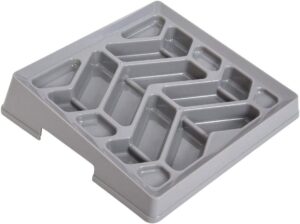 This silicone feeder is another excellent option for flat-faced pups. The wide, shallow design allows Winston to access his food easily without straining his neck, while the raised bumps encourage him to take smaller bites. The non-slip base keeps the bowl in place, and the silicone material is both durable and easy to clean. Winston seems to enjoy the
This silicone feeder is another excellent option for flat-faced pups. The wide, shallow design allows Winston to access his food easily without straining his neck, while the raised bumps encourage him to take smaller bites. The non-slip base keeps the bowl in place, and the silicone material is both durable and easy to clean. Winston seems to enjoy the 
